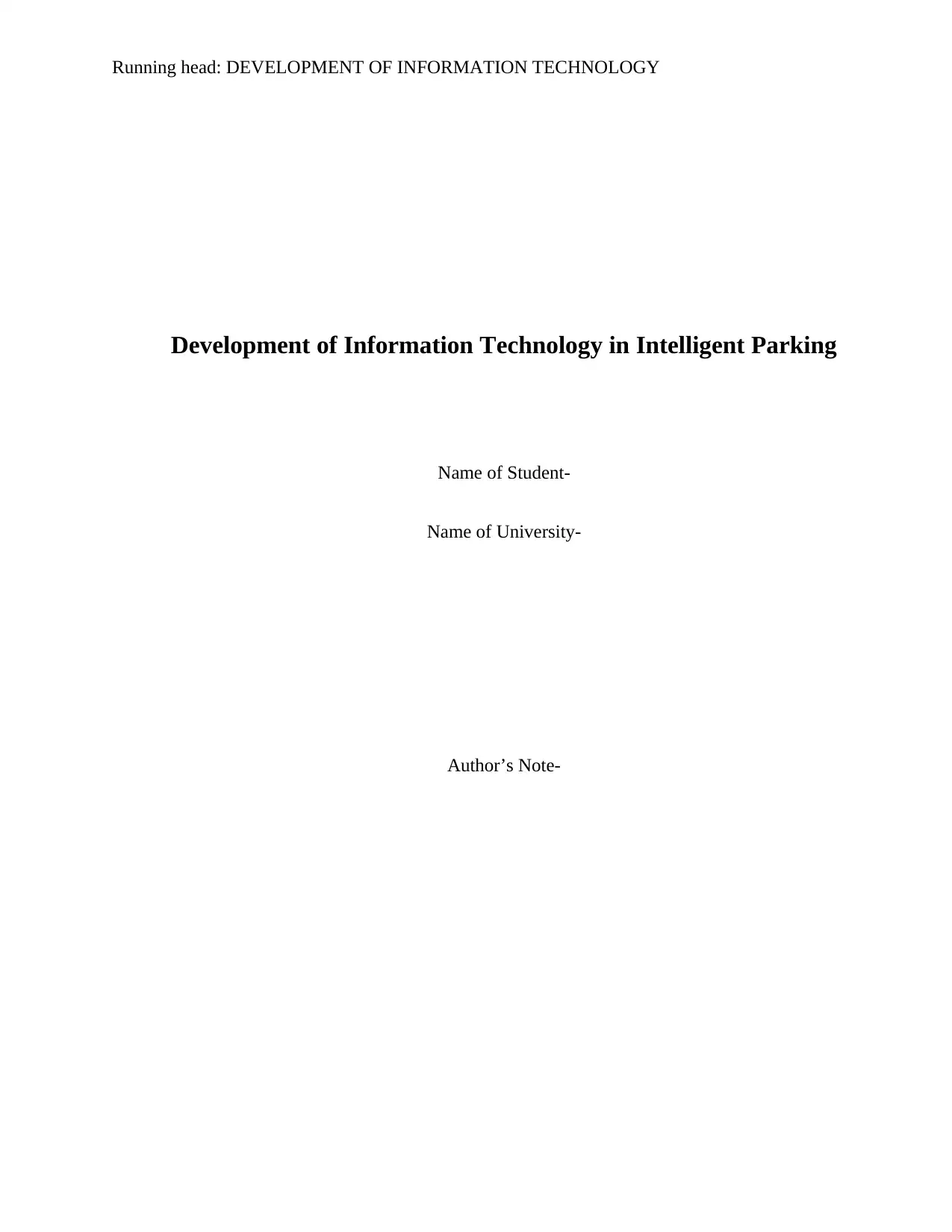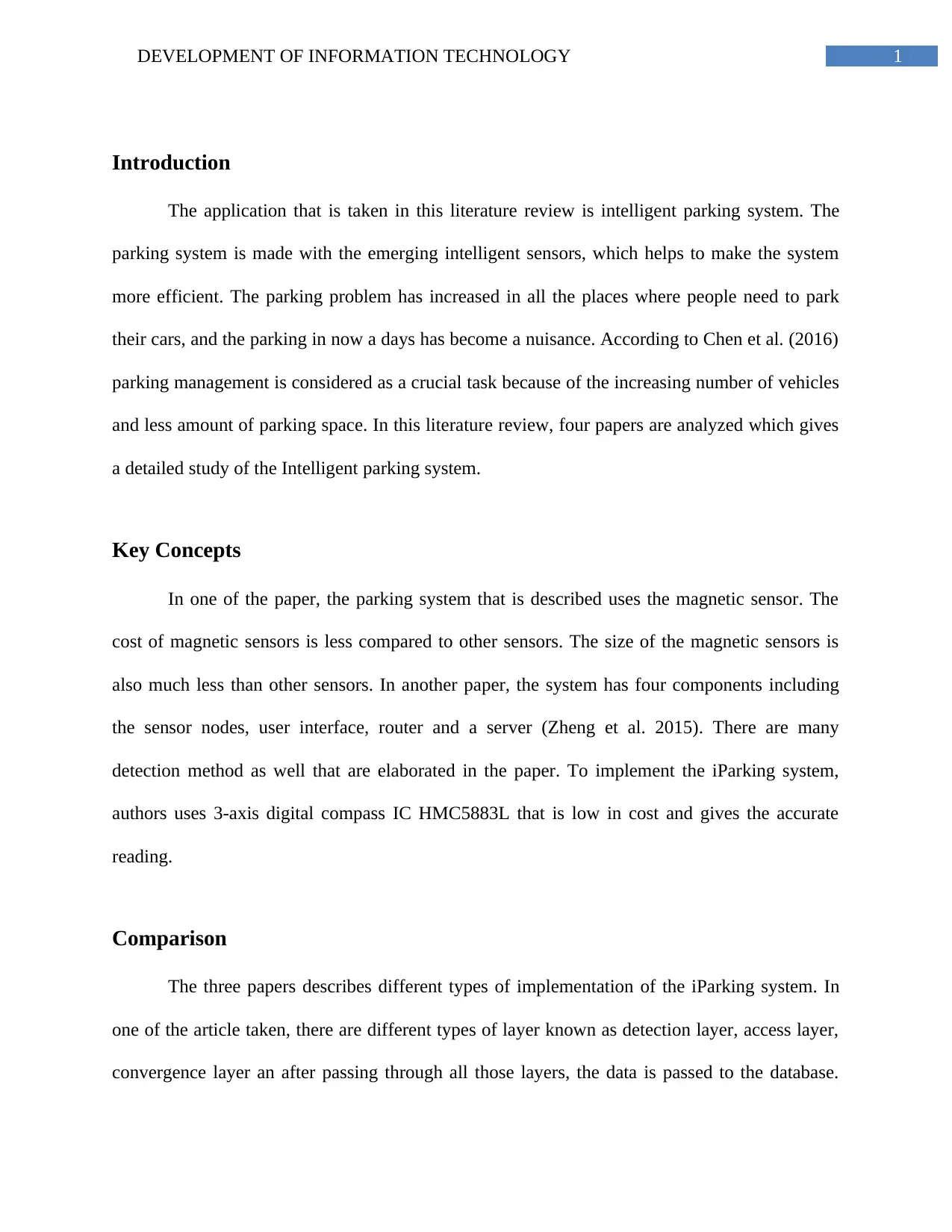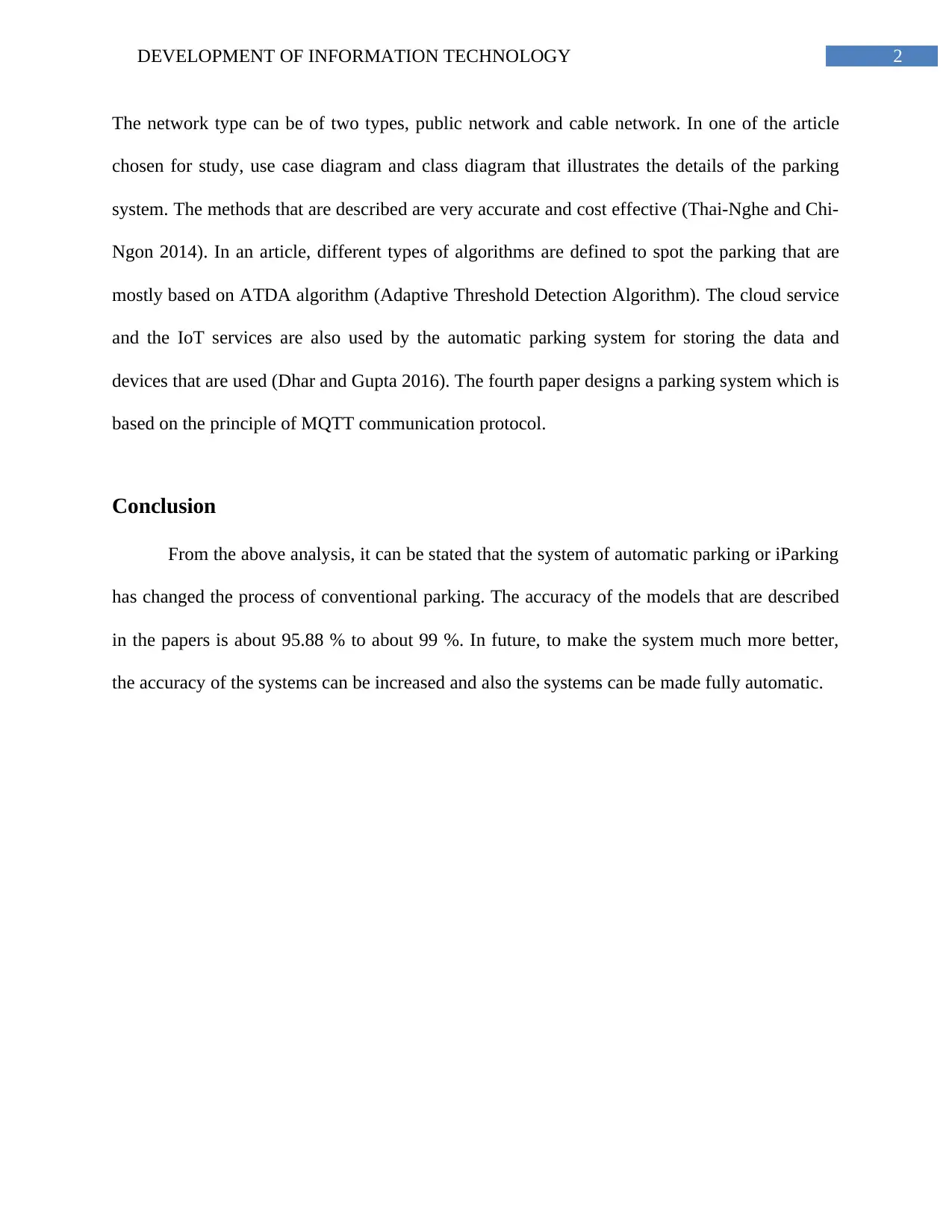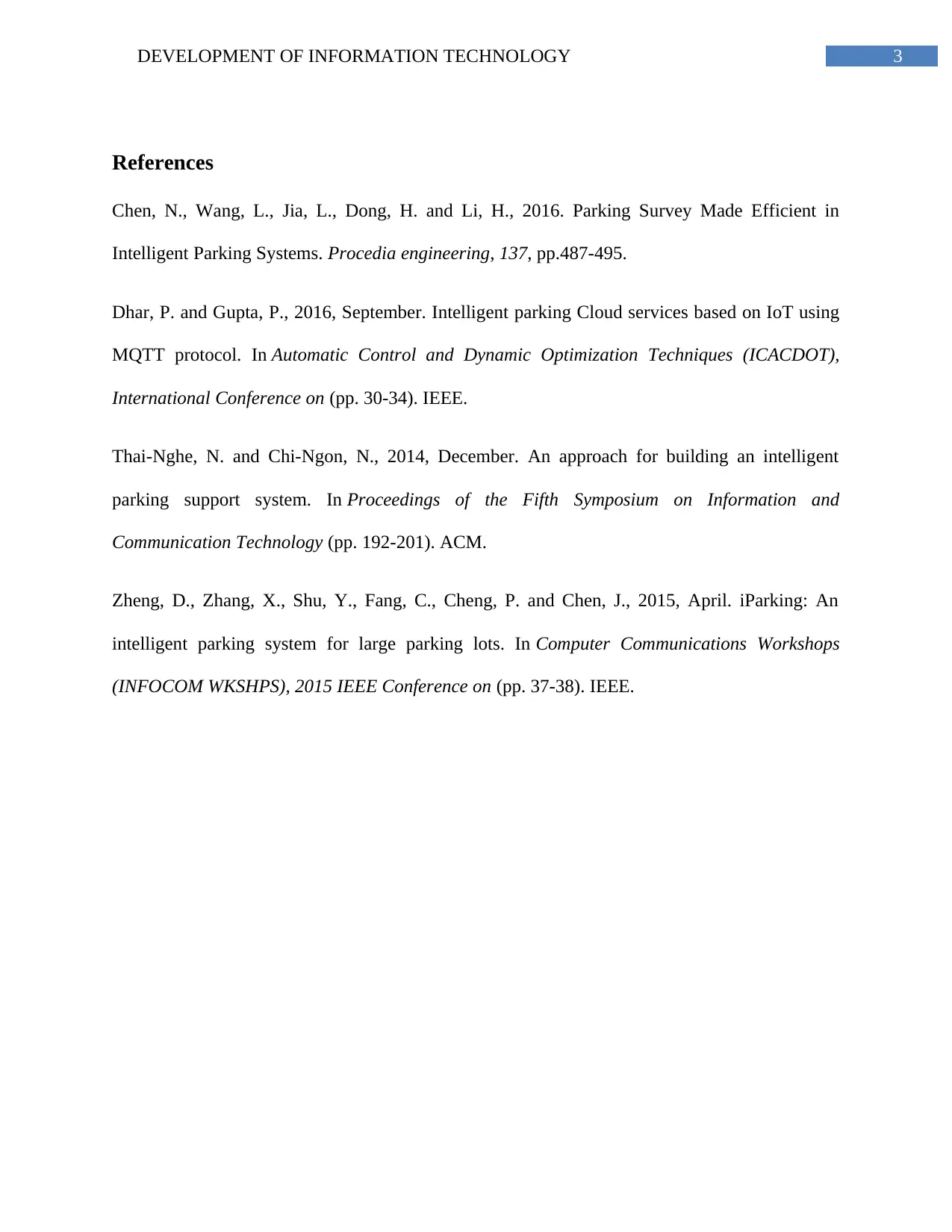SIT740 Research and Development: Intelligent Parking Literature
VerifiedAdded on 2023/06/15
|4
|712
|186
Literature Review
AI Summary
This literature review provides an analysis of four papers focusing on the development and implementation of intelligent parking systems (iParking). It begins with an introduction to the increasing problem of parking management due to the rising number of vehicles and limited parking spaces. The review covers key concepts such as the use of magnetic sensors, system components (sensor nodes, user interface, router, and server), and various detection methods including the use of 3-axis digital compass ICs. The comparison of the papers highlights different implementation approaches, including layered architectures, use case and class diagrams, and algorithms based on ATDA. The integration of cloud services and IoT for data storage and device management is also discussed, with one paper focusing on MQTT communication protocol. The review concludes that iParking systems have significantly improved conventional parking processes, achieving accuracy rates between 95.88% and 99%. It suggests future improvements should focus on increasing system accuracy and automation.
1 out of 4










![[object Object]](/_next/static/media/star-bottom.7253800d.svg)